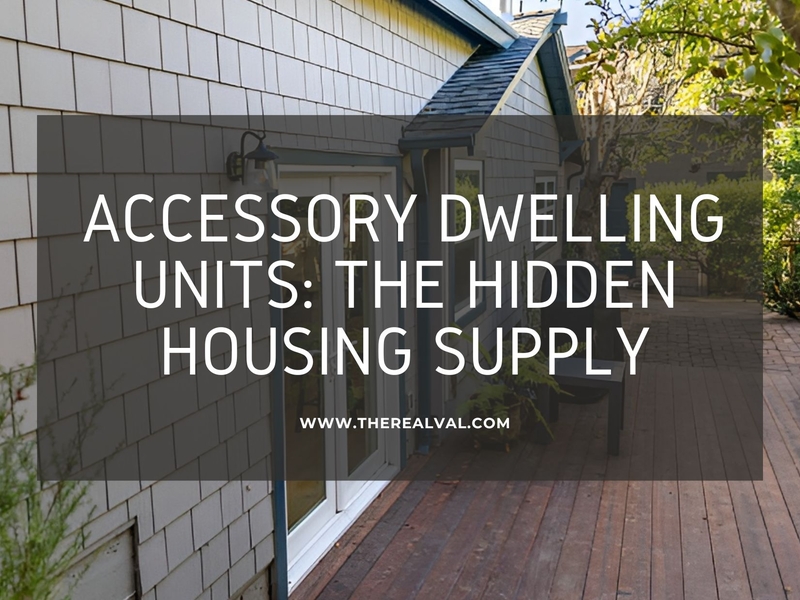The U.S. housing market has been under pressure for quite some time now due to factors such as rising costs, low inventory, and restrictive zoning. These factors have made affordability a major challenge across most metros. Amid this, there is one solution that has quietly emerged as a powerful force: Accessory Dwelling Units (ADUs). They are often referred to as backyard homes, garage apartments, or in-law suites, and are redefining what urban housing can look like.
ADUs are becoming an important part of America’s hidden housing supply as they are backed by supportive legislation, better financing options, and growing homeowner interest. Let us explore all about them in detail!
Why Is There A Sudden Buzz Around ADUs?
- ADUs represent one of the most effective ways to increase housing supply without rezoning entire neighborhoods. They offer a gradual, organic way to add homes within single-family zones which is something that traditional multifamily projects can’t easily achieve.
- A research from Brookings highlights that ADUs “don’t take up a lot of land” and can help cities expand capacity in areas where demand far exceeds supply.
- States that have relaxed ADU restrictions have seen a measurable surge in permits. California’s reforms since 2016 have unlocked tens of thousands of new units annually, proving that policy flexibility can turn homeowner interest into real housing supply.
The Different Types of ADUs
Each ADU type offers distinct advantages, costs, and regulatory implications:
- Detached ADU: DADU is a small, independent structure in the backyard.
- Attached ADU: These are built as a part of the main home; for instance- above a garage or in a converted basement.
- Junior ADU: JADU is A compact unit within an existing home, typically under 500 sq. ft., sharing some utilities.
For cities, understanding these distinctions helps shape zoning codes, design standards, and financing models tailored to each category.
Let’s Check Out the Case Studies!
- California is the poster child of ADU growth. Since passing state-wide reforms in 2016, California has become the nation’s ADU leader. By removing parking requirements, simplifying approvals, and limiting local restrictions, the state has seen ADU permits rise from a few thousand in 2016 to over 20,000 per year by the early 2020s. Los Angeles alone now issues several thousand ADU permits annually, which is a clear example of how state consistency can drive local results.
- Seattle’s decision to remove parking mandates and allow both attached and detached ADUs on one lot transformed its housing landscape. By 2023, the city recorded nearly 1,000 ADU permits which was up from fewer than 300 annually just a few years earlier. The takeaway is if we simplify the process, then homeowners will build. They have accelerated growth by streamlining rules.
- Portland took a creative approach by offering pre-approved ADU designs and partial fee waivers for those renting to long-term tenants. Oregon’s state-wide law also requires every city to permit ADUs on single-family lots. Together, these measures make Portland one of the most replicable ADU models in the U.S.
What Does Research Say About ADUs and Affordability?
- ADUs increase housing diversity and provide flexible rental options in high-opportunity areas. However, experts caution that ADUs alone cannot solve affordability challenges.
- Many ADUs are rented at market rates or used as family housing, guest units, or short-term rentals. Without affordability covenants or targeted financing programs, the lower-cost potential isn’t always realized.
Still, ADUs remain an essential part of the housing equation by expanding supply, improving flexibility, and making homeownership more financially sustainable for many families.
Are There Any Challenges that ADUs Face?
While ADUs are certainly promising, there are several persistent challenges that slow adoption.
- Upfront Costs & Financing Gaps: Building an ADU can cost anywhere from $100,000 to $300,000. Many lenders still hesitate to factor ADU rental income into mortgage underwriting. To address this, cities are experimenting with low-interest loans, grants, and impact fee waivers, all of which are critical for scaling adoption, as the Urban Institute highlights.
- Permitting Complexity: Lengthy review timelines, unclear rules, and high fees discourage homeowners. Simplified permitting can triple ADU applications within just a few years.
- Restrictive HOAs & Zoning Rules: Homeowner associations often block ADUs, but some states have introduced laws overriding HOA restrictions, ensuring that state-wide housing goals aren’t undermined locally.
- Short-Term Rentals: When ADUs are converted into Airbnbs instead of long-term rentals, they don’t add meaningful housing supply. These can be addressed by linking fee waivers to long-term rental commitments, aligning incentives with public goals.
- Neighborhood Pushback: Concerns about parking, privacy, or changing neighborhood character are common. Proactive design standards and community engagement help cities maintain aesthetics while still encouraging new units.
How Can Cities Unlock ADU Potential?
To scale ADUs sustainably, local governments can focus on a few high-impact strategies:
- Simplify & Standardize Permits: Create clear checklists, pre-approved plans, and ministerial review systems to reduce friction.
- Offer Targeted Financing & Incentives: Provide loans or grants, especially for homeowners who rent to long-term tenants.
- Tie Incentives to Affordability: Link public support to rent caps or affordability covenants for lasting community benefit.
- Limit HOA Overreach: Pass state-level reforms that prevent HOAs from blocking ADU construction.
- Promote Pre-Approved Designs: Offer ready-to-build blueprints to reduce design costs and speed up approval timelines.
Should Homeowners Build an ADU?
Advantages:
- Generates rental income or accommodates family members.
- Increases property value and flexibility.
- Contributes to local housing supply.
Challenges:
- High upfront costs.
- Potential permitting hurdles.
- Added management responsibilities.
Homeowners who are interested in building should begin by consulting their city’s ADU guide, exploring local financing options, and reviewing pre-approved design catalogues to save both time and money.
Accessory Dwelling Units are a practical, scalable, and community-friendly way to expand U.S. housing supply. They are a critical piece of the housing puzzle because unlock “hidden” capacity in existing neighborhoods, expand rental options, and foster inclusive growth.
At a time when every new home counts, ADUs show that small-scale, homeowner-led development can deliver big results.
If you’re exploring how ADUs can enhance your real estate strategy or valuation model, reach out to us at info@therealval.com
Trending





